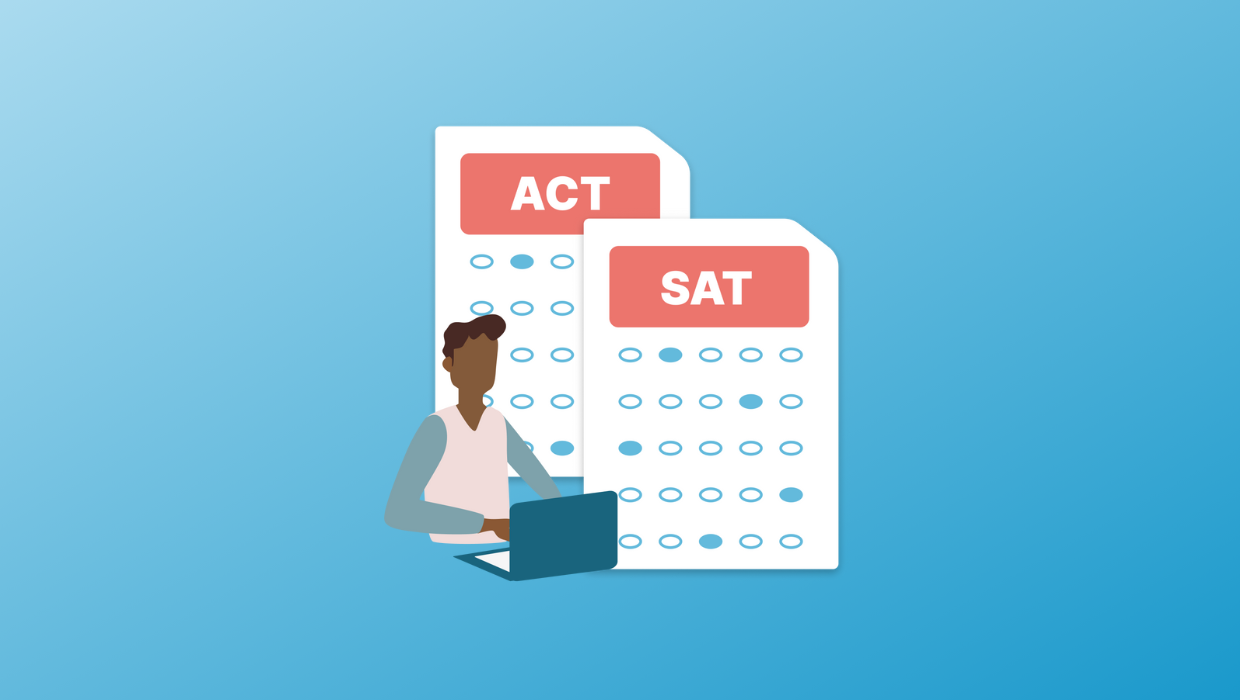15 min read
Considering Scoir for Your High School? Here’s What You Need to Know
Hey there, counselors! 👋
Scoir is free for your students and for you. We also offer Advanced Solutions to help you better guide your students.
Access resources in the areas of test prep, essay support, and financial aid to better navigate every part of the admissions process.
We offer a flat 50% discount for each student who receives free or reduced lunch in your school or district.
Enjoy Career Readiness Early Access for grades 6-8, built to help you guide students and track progress in the early years of career learnings and activities.

Career development (certifications, courses & curriculum) for changemakers.
Check out content and practical guides to help inform your enrollment strategies and programs.
4 min read
 Sara Laszlo
:
December 18, 2023
Sara Laszlo
:
December 18, 2023

If you’re getting ready to take the ACT, SAT, and/or PSAT, you may be wondering how to prepare. Where do you start? What’s the best way to practice? It may seem overwhelming at first, but taking standardized tests is a skill, and like all skills, it is something that you can learn and improve with the right kind of practice.
So, how do you practice for the ACT, SAT, and PSAT?
Here’s our tried and true method of test prep (and it’s just 4 steps!):
Taking a practice test is the best way to get to know the test and see what you need to work on. And if you aren’t sure whether you want to take the ACT or the SAT, taking a full-length practice test for each is a great way to help you make that decision.
You’ll want to mimic testing conditions as closely as possible, so the practice test should be full-length and timed. It should also be the same format as the test you plan on taking, so if you’re taking the paper ACT, take a paper practice test, and if you’re taking the digital SAT, take a computer adaptive practice test. Ideally, you should complete the practice test in one sitting, taking only the breaks allowed during the real test. This will help build your stamina for test day.
After you complete the practice test, it’s time to evaluate your performance. Pull up your results and ask yourself the following questions:
Then go through the test and revisit any questions that gave you trouble. Review the questions you missed, skipped, or flagged, as well as any questions that took you a long time. Read the answer explanations and make note of any concepts you need to review.
Now that you know what you need to work on, it’s time to do some targeted practice! Focus on the areas you identified in the previous step. First, review any concepts or content areas that need work. Then, learn some strategies to help you tackle the question types that give you the most trouble. Finally, do some targeted practice, focusing on the areas you want to improve.
After you’ve spent some time practicing your areas of weakness, take another full-length practice test. See how you’ve improved and take note of what you still need to work on. Then practice the areas that need more work. Keep repeating steps 1-3 until test day.
As you practice, don’t forget to look back and see how you’ve improved. Celebrating your successes will help you stay motivated!
This study method works well for any standardized test. Keep reading for specific tips for the ACT, SAT, and PSAT.
The biggest tip for the ACT is to read! 3 out of the 4 sections on the ACT are passage-based—the English, Reading, and Science sections all contain long passages. Being a strong reader will give you an advantage on these sections, and the best way to become a stronger reader is to read.
It’s best to get in the habit of reading for pleasure. Pick things that interest you and spend 30-45 min a day reading. You can read novels, newspaper articles, or non-fiction books. It doesn't really matter—just be sure that you pick things you enjoy so that you stick with it.
If you’re looking for reading materials to help practice for the Science section, newspaper articles about science are great! I especially like the Trilobites column from the New York Times.
If you’re taking the digital SAT, you’ll want to get comfortable with the format, and the best way to do that is to take computer adaptive practice tests. Because the digital SAT is a computer adaptive test, each section is divided into two modules and your performance on the first module will determine if you get an easier or harder second module. Linear (non-adaptive) tests can be a useful source for additional practice questions, but you’ll want to make sure that your full-length practice tests are actually adaptive, just like the real test.
You’ll also want to learn how to use the Desmos Graphing Calculator, which is built into the testing app. Although you’re allowed to use your own approved calculator, we recommend that you still learn how to use Desmos in case something happens to your calculator during the test.
The digital PSAT is very similar to the digital SAT. The content covered is almost the same and the format is identical. The two key differences are that the PSAT questions are on average slightly easier, and the PSAT is scored on a 1520-point scale rather than a 1600-point scale.
It makes a lot of sense to think of your PSAT practice as part of your overall SAT preparation. Just like the digital SAT, the PSAT is now a computer adaptive test, so you should take a computer adaptive practice test to familiarize yourself with the new format. While you should take at least one dedicated PSAT practice test, don’t be afraid to supplement with digital SAT materials.
Test-taking is a skill that you can improve with practice. Get started by taking a practice test today. Happy studying!
Next, check out these test practice resources from Test Innovators!
This blog post was authored by Sara from Test Innovators, our test prep partner. You can learn more about Test Innovators on our partners page.
This article was originally published on October 12, 2023. It was updated on December 18, 2023 for accuracy and comprehensiveness.

Sara Laszlo is a Marketing Manager at Test Innovators.

15 min read
Hey there, counselors! 👋

7 min read
As part of your college application process, many colleges will require an admissions essay. This is your opportunity to highlight your strengths,...

6 min read
Hey, it’s Elena! Summer is nearly here (thank gosh ☀️) and for right now, you’re probably thinking, “I’ll be seeing my friends all summer, thank...